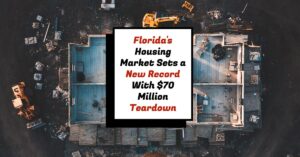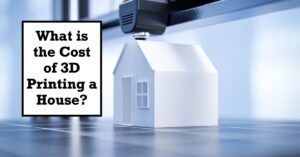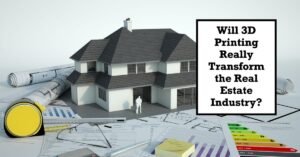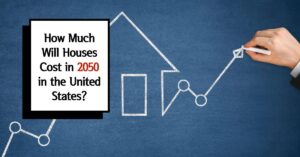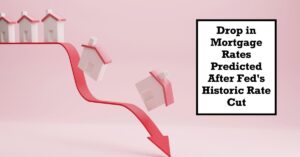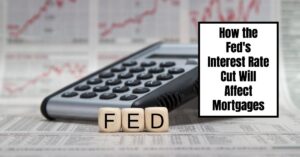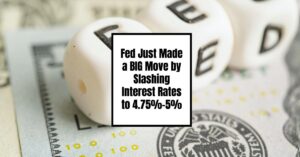The question that many homeowners, potential buyers, and investors are asking as we approach 2025 is: will the housing market crash in Idaho? Considering the recent trends, market predictions, and ongoing economic factors, it appears that a major crash is unlikely. Instead, signs point towards stability and possible recovery, making this an excellent time for prospective buyers and investors to explore the opportunities available.
Will the Housing Market Crash in Idaho?
Key Takeaways
- Stability on the Horizon: The Idaho housing market is anticipated to remain robust with minor fluctuations through late 2024 and into 2025. The average Idaho home value is $454,300, up 2.1% over the past year.
- Price Predictions Varied Across Regions: Areas like Boise City and Coeur d'Alene are projected to see slight increases in home values over time.
- Shifting Buyer Dynamics: The demographics of homebuyers are changing, with cash offers and less urgency becoming the norm.
- Supportive Economic Factors: The overall health of the housing market is being bolstered by favorable local economic conditions and sustained low-interest rates.
Understanding the Current Market Trends
To gain a comprehensive understanding of whether the housing market in Idaho will crash, it’s crucial to consider the various factors at play within the state. Different metropolitan areas, including Boise City, Coeur d'Alene, Idaho Falls, and Twin Falls, showcase diverse housing dynamics.
The following table reflects the anticipated price changes for different metropolitan statistical areas (MSAs) by the end of November 2024 and through August 2025 (Zillow):
| Region | Type | State | Base Date | 30-09-2024 | 30-11-2024 | 31-08-2025 |
|---|---|---|---|---|---|---|
| Boise City, ID | MSA | ID | 31-08-2024 | 0 | -0.7 | 0.8 |
| Coeur d'Alene, ID | MSA | ID | 31-08-2024 | 0 | -0.2 | 2.7 |
| Idaho Falls, ID | MSA | ID | 31-08-2024 | 0.1 | -0.2 | 2.1 |
| Twin Falls, ID | MSA | ID | 31-08-2024 | 0.1 | -0.2 | 2.3 |
From this data, we observe that Idaho's housing market, particularly in cities such as Boise and Coeur d'Alene, is positioned for stabilization. Boise City showed a 0% change in home prices by September 2024. Projected numbers reveal a slight decline of 0.7% by November, followed by a modest recovery of 0.8% by August 2025. Meanwhile, Coeur d'Alene anticipates price stability followed by an increase of 2.7% in home values by 2025, reflecting a healthy market recovery.
Trends Influencing Idaho's Housing Market
Several contributing trends shed light on the dynamics shaping Idaho's housing market, helping reveal the outlook in the run-up to 2025.
- Economic Prospersity: Idaho has been enjoying consistent economic growth, which plays a crucial role in housing demand. Areas like Boise City have attracted various businesses, generating new job opportunities and resulting in improved economic health. This positive economic backdrop stabilizes housing demand.
- Low Interest Rates: Despite fluctuations, the mortgage rates remain relatively low and are likely to continue at manageable levels throughout 2024. This environment encourages home buyers to engage more, making it an advantageous time for those looking to purchase homes.
- Diverse Buyer Demographics: The housing market is currently experiencing a shift towards buyers with cash offers, reducing the reliance on financing. This dynamic contributes to competitive bidding and keeps home prices stable, as sellers often favor buyers who can close quickly.
- Investor Interest: Real estate investment has remained strong in Idaho as numerous investors are attracted to rental properties and profit opportunities. This influx adds stability to the market, as investors typically hold properties longer, avoiding rapid sell-offs that can destabilize prices.
- Population Growth Trends: Idaho has seen significant population growth in recent years, particularly from newcomers relocating from states with higher costs of living. This new demand for housing serves to bolster the local real estate market, resisting pressure from potential downturns.
Community and Lifestyle Appeal
Idaho's attractiveness extends beyond just real estate numbers. It encompasses lifestyle aspects that significantly influence housing desirability.
- Outdoor Enthusiast Paradise: With a wealth of outdoor activities—from hiking to skiing—Idaho appeals strongly to those seeking adventure and connection with nature. The combination of mountains, lakes, and lush landscapes serves as a significant draw.
- Family-Centric Environments: Many communities within Idaho boast reputable school systems, parks, and family-friendly amenities, making the state particularly appealing to families or those looking to start one.
- Affordable Living: Compared to many neighboring western states, Idaho remains relatively affordable. Although home prices are rising, Idaho still offers lower-priced alternatives to states like California and Washington, attracting new residents.
- Local Culture and Community: Idaho prides itself on a rich local culture characterized by close-knit communities. Markets, festivals, and assorted local events create an inviting atmosphere that many find appealing when making relocation decisions.
What Experts Say
A considerable amount of expert opinion is focused on ensuring that the Idaho housing market looks resilient against major downturns. According to a recent reports, signs point toward a healthy market—not a disaster—despite some economic challenges, such as increasing interest rates.
Experts underline the importance of focusing on long-term trends rather than transient market fluctuations. They point out that areas expecting gradual price increases highlight an overall stabilization, which is much healthier than the speculative bubbles that lead to catastrophic crashes. Furthermore, many analysts emphasize the significance of local economies.
My Perspective
As a seasoned housing market analyst, I contend that Idaho’s real estate dynamics serve as both an opportunity and a cautionary tale. While it’s normal for the market to show fluctuations, the indicators lean toward more stability rather than a crash. Those considering investing in Idaho's housing market should view the current conditions as an invitation to explore potential without undue panic about an imminent crash. Seize the opportunity to assess options in a market that looks poised for growth.
Current Market and Future Outlook
The current projections for Idaho’s housing market lean toward stability as we approach the latter half of 2024 and into 2025. As shown by the forecasts, while there may be minor price adjustments, these factors inspire confidence in a healthy market structure.
Understanding the data shows that marketing conditions may favor buyers in certain metro areas, especially those ready to leverage cash offers. The diverse economic influences, along with positive demographic shifts, present a more robust future outlook.
To answer the initial question—will the housing market crash in Idaho? Most industry experts lean toward the conclusion of “no.” Instead, residents can anticipate a more balanced market where the chances of dominating price crashes are significantly reduced.
Final Thoughts
With dirt at a premium, it is essential for buyers to remember that the upward trajectories are more than just speculative flukes. They are results of sustained economic efforts, turned infrastructure investments, and genuine lifestyle appeals. As we advance, it’s essential to remain informed about local trends and dynamics that collectively shape Idaho’s housing market.

